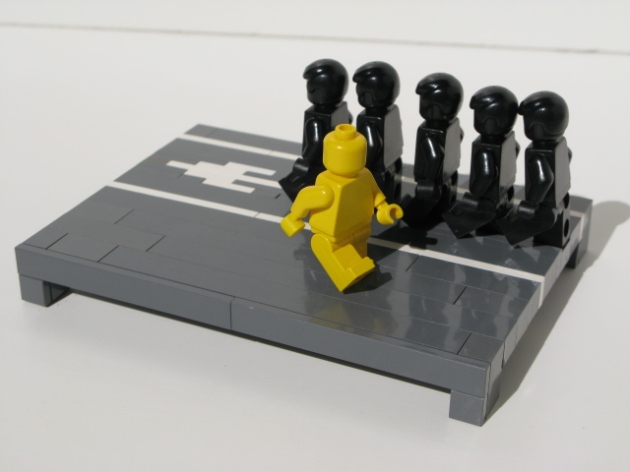By LCDR Mark Blaszczyk
With less than a week until Waterfront Athena 8, we’re showcasing some of the success stories from our previous events. Here is some background and an update on one of the ideas presented at Athena 7, the Air Squeegee by STG1 Michael Butcher, COMLCSRON ONE.
The design process for his concept started when he was a junior sailor, being one of the people that had to perform the sometimes dangerous activity of drying the towed array sonar. Like many of our Athenians, he always thought that there had to be a better and safer way to do it.
His idea for an air drying system didn’t come about until he was at COMLCSRON ONE, when the ASW package was being installed on the Littoral Combat Ship. In the process, there was a question about how to get the drogue out of the extra-long fairlead that the ship was fitted with. STG1 suggested that an angled air jet be used to blow the line through the fairlead, and it’s from that idea that his Air Squeegee pitch was born. If there were three jets, then full coverage could be achieved and the array could be dried off without the need to hand wipe it.
About a year later he learned about The Athena Project and figured it would be a good opportunity to pursue his dream of never having to wipe down an array again. He presented his prototype at Athena 7 and though he didn’t win the Admiral Sims award, his idea received considerable attention.
After his presentation he spoke with a few other sailors about his idea and incorporated their concerns into a “MK2” design. One of the key flaws with the MK1 was that the protruding jets could snag on the array and cause an unsafe condition. To alleviate this problem he incorporated nylon hardware in the concept creating a kind of tear away point in case of malfunction.
Recently, STG1 Butcher talked through and explained the problem and his proposed solution to Susie Alderson and her team of Scientists from Commander, Naval Surface Forces SES, granting specific funding for further research and prototypes, onboard USS BENFOLD. While onboard he worked with Pete Schmitz of Intel Corporation to 3D map the space and during a follow-up meeting at SPAWAR, STG1 worked with modelers to generate a 3D rendering.
Soon, the team expects to 3D print his idea and start testing his MK2 design. In a parallel effort, STG1 Butcher has been working with the folks at PEO IWS 5 and NUWC to determine feasibility.
So, what started as a simple idea born out of frustration has blossomed into a concept with real legs and momentum. To share the story of how far the idea has come, STG1 will be kicking off Waterfront Athena 8 this Friday (hopefully with his MK2 design in tow).
This is a great example of the Navy innovative spirit and the great potential your ideas have at an Athena waterfront event – I look forward to seeing your ideas at the next Athena event.
If you’re in the San Diego area and want to present your idea, send us a message! And, more importantly, come out to Societe Brewing on August 28th for Athena 8!
LCDR Mark Blaszczyk is the Combat Systems Training Lead in Commander Littoral Combats Ship Squadron One and the co-lead for The Athena Project’s San Diego chapter. He is a graduate of Purdue University with a BS in Civil Engineering and Duke University with a Masters in Business Administration.
Connect with The Athena Project on Facebook: www.facebook.com/athenanavy or follow us on Twitter: @AthenaNavy. Interested in starting a movement of your own? Message us, or e-mail athenanavy@gmail.com!





